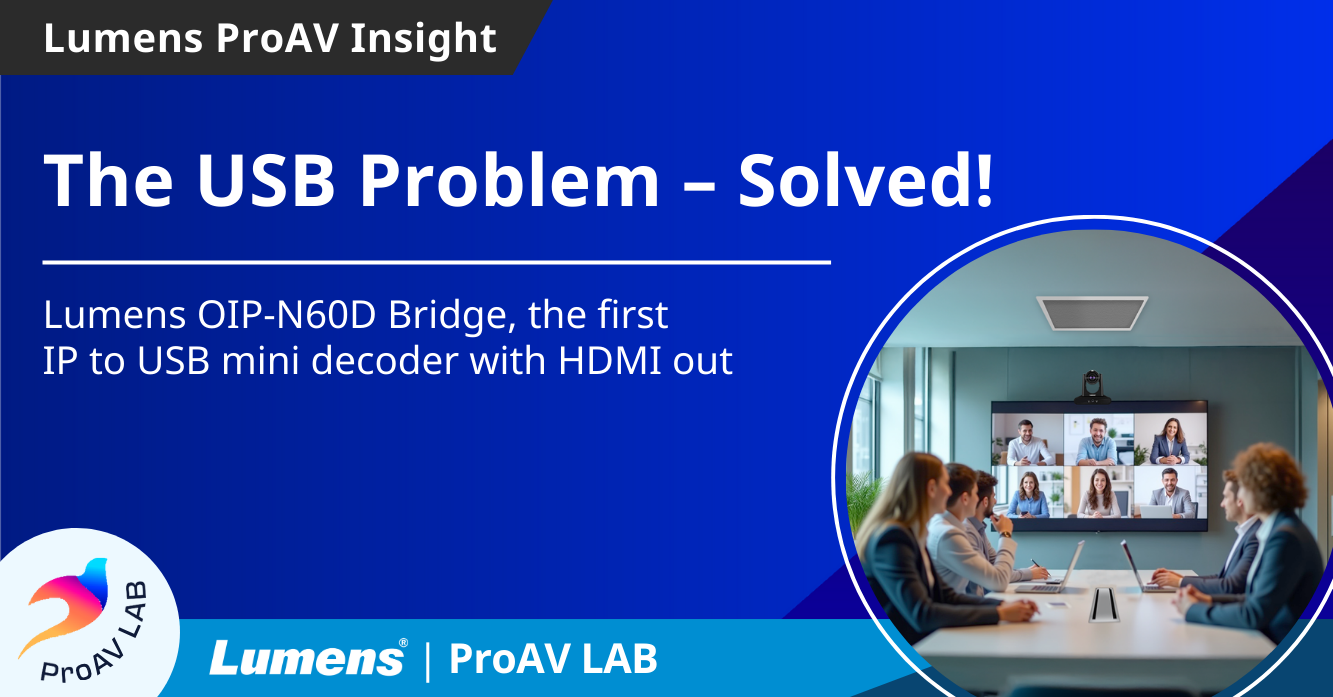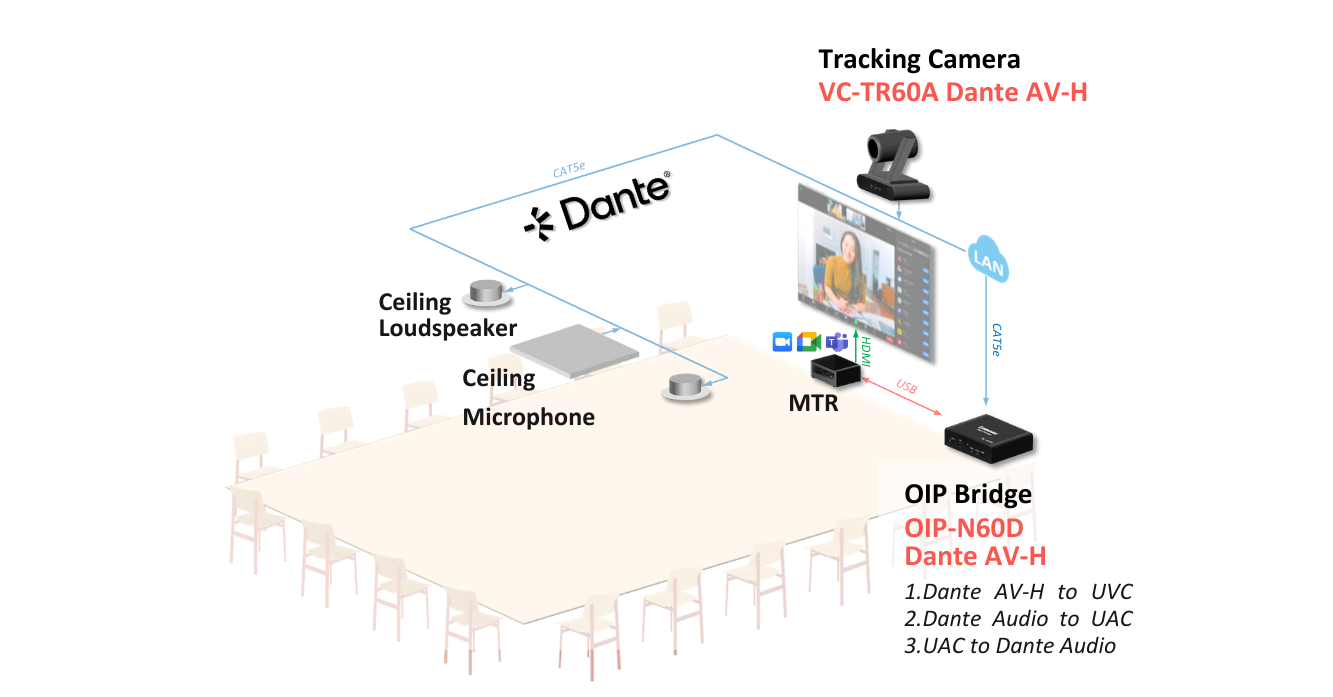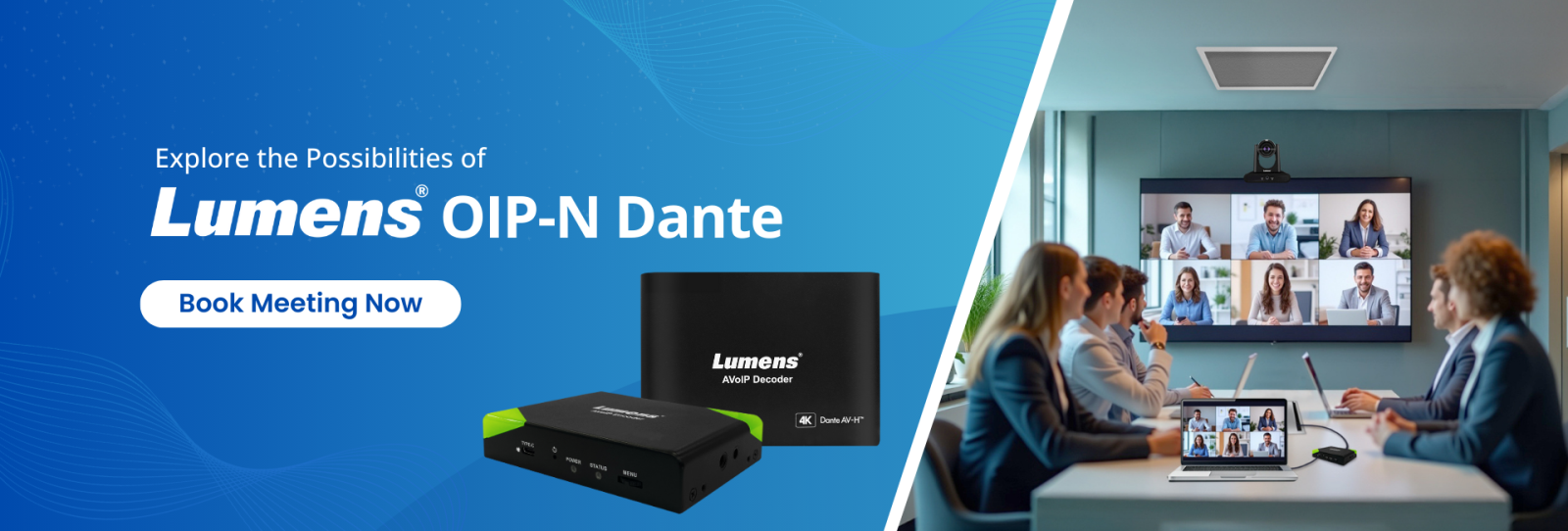The USB Problem – Solved!
By Lumens
March 03, 2025 3373

Lumens OIP-N60D Bridge is the first IP to USB/HDMI mini decoder
The corporate, public and education sectors are reliant on conferencing platforms and collaboration tools for their communications. This puts the humble USB connector on a BYOM (bring your own meeting) Zoom or Teams laptop center stage.
▶ The Ubiquitous USB
Fundamental to video conferencing, unified communications and collaborative platforms are a PC's USB ports. These need to be ready to connect to cameras, microphones and speakers. Zoom Rooms, Microsoft Teams Room, BYOD laptops and sharing devices such as Barco ClickShare and Mersive Solstice all depend on USB connectivity. It's a universal standard, plug and play and handles media, control and power…
So, if IP the solution is OIP-N60D, what is the USB problem?
▶ The USB Problem
- Modern laptops have a limited number of USB ports (especially USB-C) which are quickly used up.
- Attaching and configuring two USB devices (a microphone and a camera) to a BYOM laptop can require a call to the AV team.
- USB cables are limited in length to a few meters and are rarely concealed in wiring ducts.
- It can be difficult for network administrators to manage devices connected by USB.
- When audio and video are routed over separate USB cables, synchronizing the voice and image can be a problem.
▶ Why IP is the Answer
Ethernet-based technology has many advantages over USB including remote management and use of network power (PoE), the use of pre-installed Cat-5/6 cabling and standard off-the-shelf IT switches. Most professional cameras (PTZ and box units), digital sound processors (DSP) and in-room microphone and speaker systems are now IP-based. To use these peripherals with laptops with USB inputs typically requires a bridging adapter or converter.
▶ The Video over IP to USB Solution
Modern professional IP cameras deliver the kind of image quality and features (such as motion tracking, voice-tracking and auto-framing), that few USB webcams can match. Then there's the flexibility of placing network-powered models (PoE) virtually anywhere, without concern for cable length or the proximity of a power socket. And for AV teams, the benefit of centralized management is not to be underestimated.
With the arrival of the Lumens OIP Bridge range, there's now a simple, effective and reliable way to decode IP video for output to USB-C for plug-and-play connection to most UC platforms. Now IP cameras can be connected to boardroom video systems, hybrid meeting rooms and conference rooms instead of relying on outdated webcams attached to an inconvenient 1-meter USB cable.
▶ System Diagram

▶ Adding Dante Audio
The Dante versions of OIP Bridge units handle both IP video and Dante audio. Both the USB and HDMI ports of the OIP Bridge Decoder will now output synchronized audio and video to both in-room monitors and connected laptops.
Dante meeting rooms are extremely popular globally, delivering the highest quality audio capture and sound reinforcement. Dante microphones, speakers and DSPs are widely available, giving AV teams access to their preferred brands, remote support, secure access rights and a familiar control interface. The prospect of uniting IP video with Dante video in a single mini device is a real breakthrough for the industry.
▶ Switching IP Sources
The OIP-N60D Bridge decoder is also valuable in rooms where multiple IP cameras are installed. The unit can see all video camera streams on the network so using its simple browser-based user interface or a third-party controller, the decoder can immediately switch to output any available source. Indeed, in combination with Lumens VS-KB21N, the decoder effectively becomes a cost-effective IP video switcher and camera controller with HDMI and USB output.
▶ All-in-one USB Decoding
Lumens OIP Bridge Dante solves the core issue that has plagued the AV industry for years – the ability to convert audio and video directly from IP to USB. Earlier solutions required multiple steps – an IP to HDMI converter then an HDMI to USB converter. In addition, users needed a Dante to USB adapter dongle. Not only is this messy, expensive and difficult to manage, it typically added a delay that was unacceptable in professional environments.
What's great for the user now is the ability to plug in their laptop using a single USB cable. One wire does it all – synchronized high quality audio and video with no drivers required.
The computer simply recognizes the Bridge as an audio/video source and the meeting can begin.
▶ Book an OIP-N Dante Demo Now!
